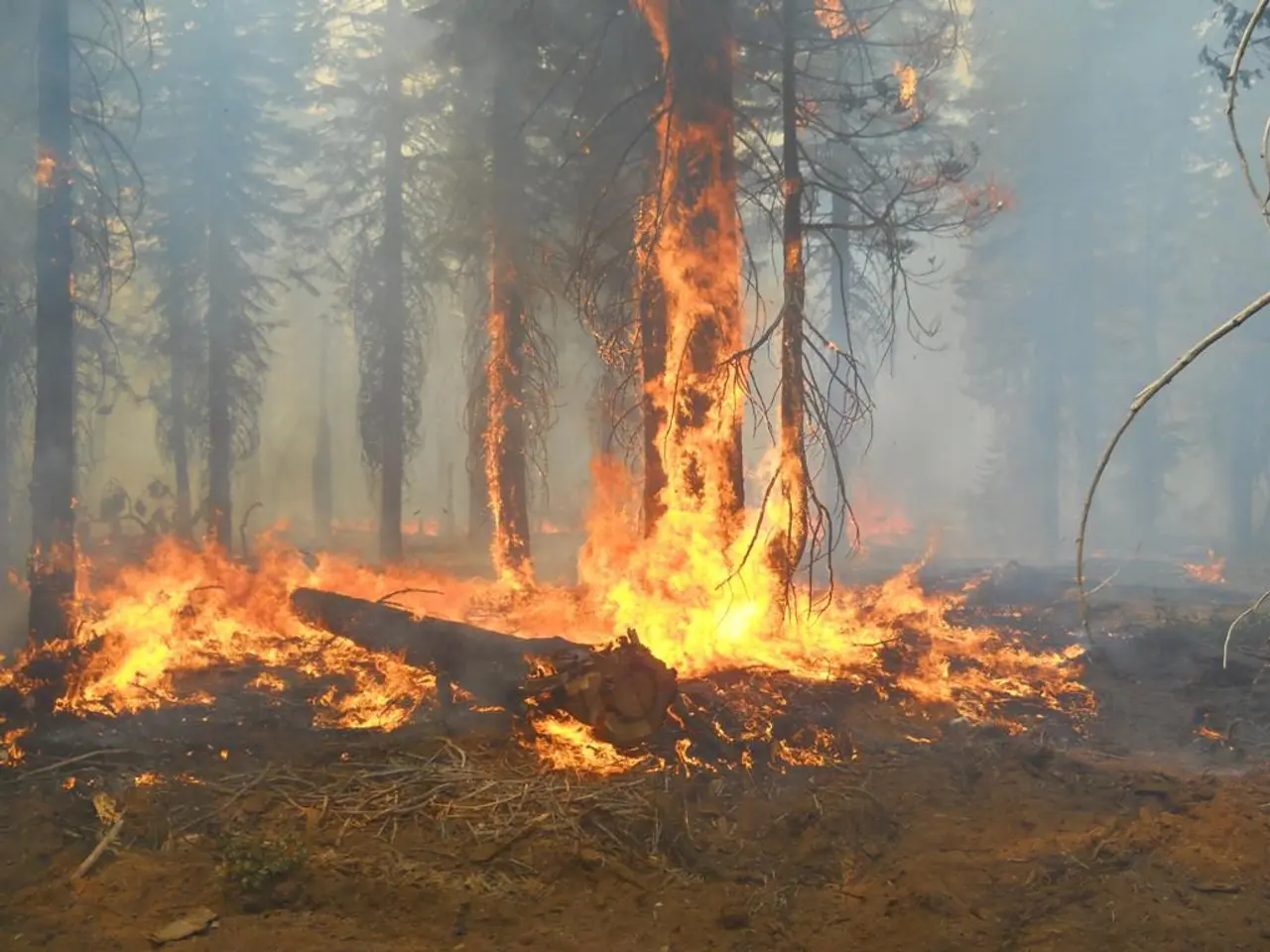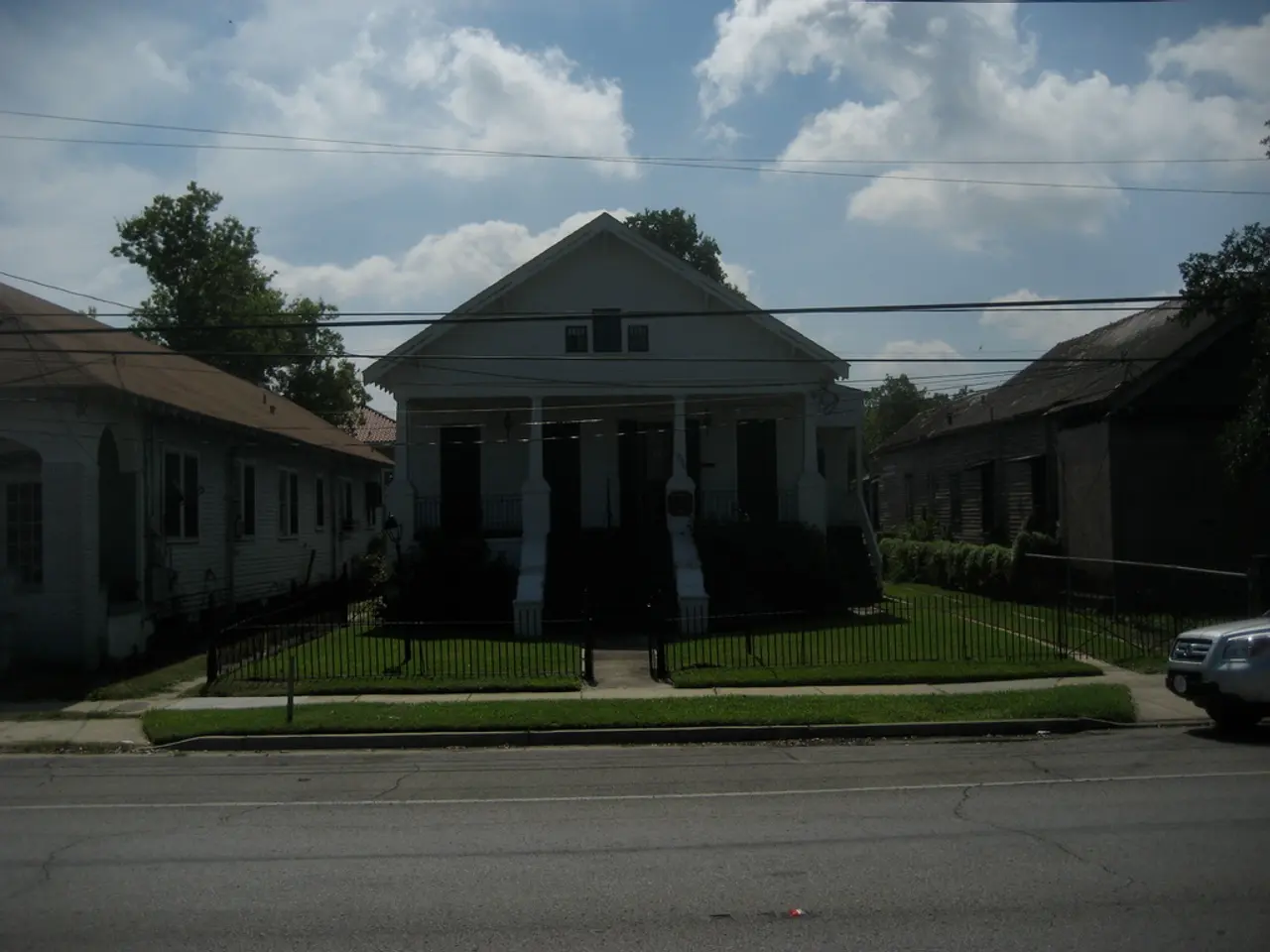Fires erupting in Galicia and Andalusia trigger evacuation of residences and accommodations
Spain Battles Intense Forest Fires Across Multiple Regions
Spain is currently grappling with a series of forest fires that have impacted several areas, including Tarifa, Ponteceso, Navarre, and Artajona. The causes of these fires range from climate-driven heatwaves to human activity and accidents.
The Fires in Ponteceso and Tarifa
In Ponteceso, northwest Spain, the initial fire in Balarés (Cospindo parish) was started by a downed power line. Subsequent related fires in Brántuas and Cores are suspected to have been deliberately set. The fires consumed hundreds of hectares of forest, forcing the evacuation of the parishes of Corme Aldea and Guxín. In Tarifa, a southern coastal resort popular with tourists and kite surfers, a fire reportedly triggered by a motorhome fire rapidly spread, affecting a two-mile strip. This resulted in evacuations of homes, hotels, campsites, and restaurants, notably affecting the Valdevaqueros campsite and the Estrecho Natural Park area.
Fires in Navarre and Artajona
While specific details on fires in Navarre or Artajona were not readily available, the overall national situation includes multiple fires and emergency responses spread across various regions. In Artajona, the fires affected dry and irrigated agricultural land and forest areas. A separate forest fire in Artajona was stabilized, and the NA-132 road was reopened.
Response Efforts
Authorities have deployed hundreds of firefighters, aircraft, and helicopters in affected regions. For instance, over 100 firefighters and 17 aircraft were mobilized in Tarifa. In Ponteceso, hundreds of emergency personnel worked to stabilize multiple fires, managing to control at least two of the five fires by Sunday evening. National firefighting bodies, including INFOEX, UME, and regional services, coordinate complex operations, leveraging advanced technology and large human resources to fight the fires, especially in inaccessible terrain or near urban centers.
Evacuations and Traffic Restrictions
Evacuations and traffic restrictions have been enforced to prioritize safety, particularly in heavily affected zones like Tarifa's resort and coastal areas. A fire in Tarifa forced the evacuation of over 5,000 vehicles and a significant number of people. Roads were closed in Ponteceso, with kilometers 71 to 80 of the N-340 highway closed. No earlier mentioned roads were affected by fires in Viana do Castelo, Vila Real, or Porto.
Climate Change and Wildfire Hotspots
Multiple fires across Spain this summer are exacerbated by an intense heatwave and the country’s classification as a "wildfire hotspot" due to climate change, which increases the frequency and intensity of such events. The fires have resulted in evacuations of several hundred residents in affected areas like Ponteceso, Tarifa, and the Las Hurdes region with some villages housing evacuees in safe locations.
In conclusion, the fires in Spain this summer have been driven primarily by extreme heatwave conditions worsened by climate change and a mix of accidental and deliberate human causes. The major affected areas include Tarifa in the south and Ponteceso in the northwest, both experiencing serious forest and residential area fires with extensive evacuations and emergency firefighting responses underway. Although specific details on fires in Navarre and Artajona were not found in these results, the national context shows widespread wildfire challenges.
- French news outlets have reported on the ongoing forest fires in Spain, particularly those related to the incidents in Ponteceso and Tarifa, which were sparked by an electrical malfunction and a motorhome fire, respectively.
- Aside from the forest fires, Spain has also experienced some accidents involving fires, such as the one in Artajona, where the exact cause remains unclear, but the blaze affected both agricultural land and forests.
- In the midst of the general-news events unfolding in Spain, weather forecasters have predicted impending storms, which could potentially aid firefighters in battling the ongoing wildfires, although these storms also pose a risk of triggering additional fires due to dry conditions and high winds.








